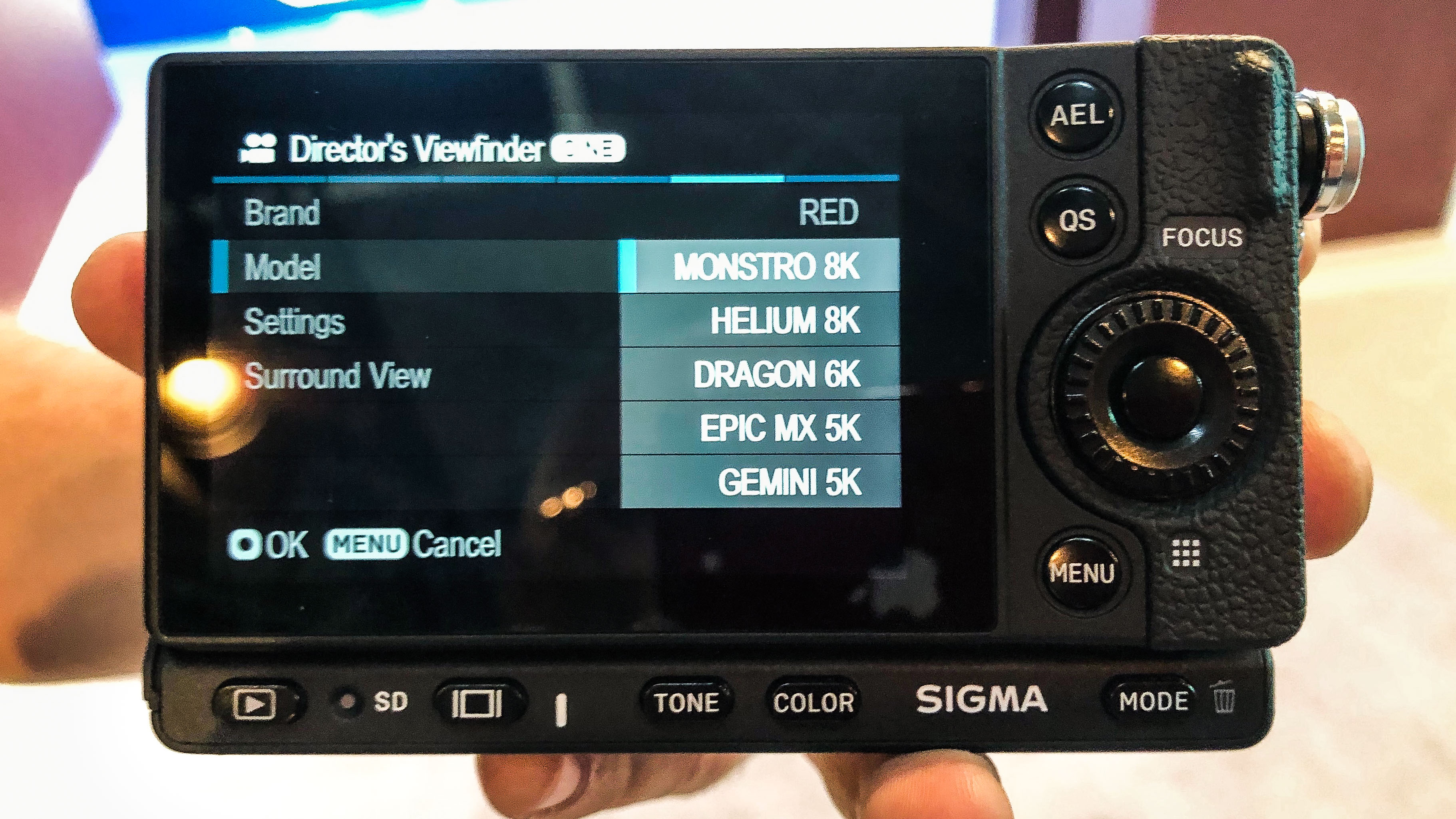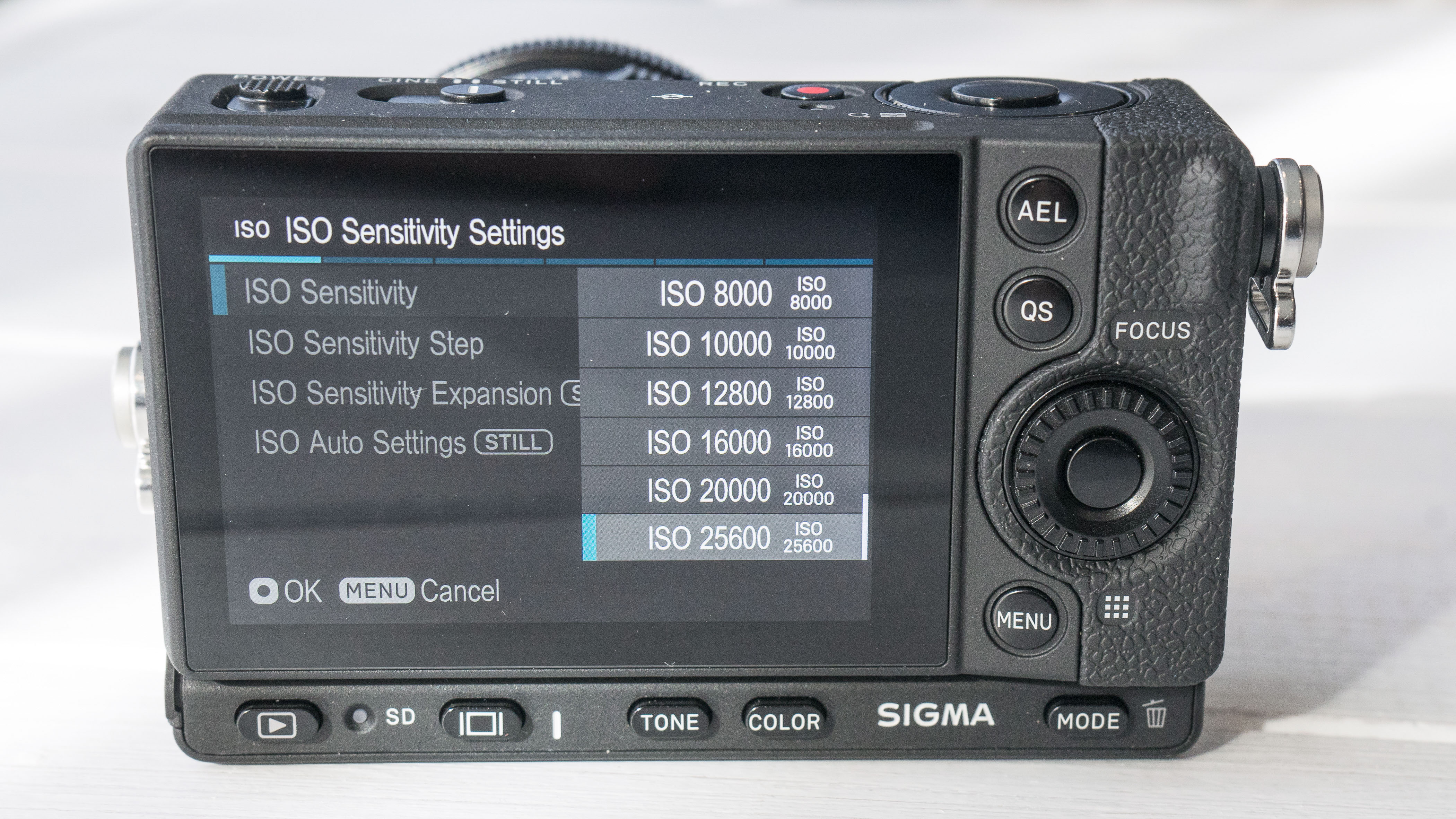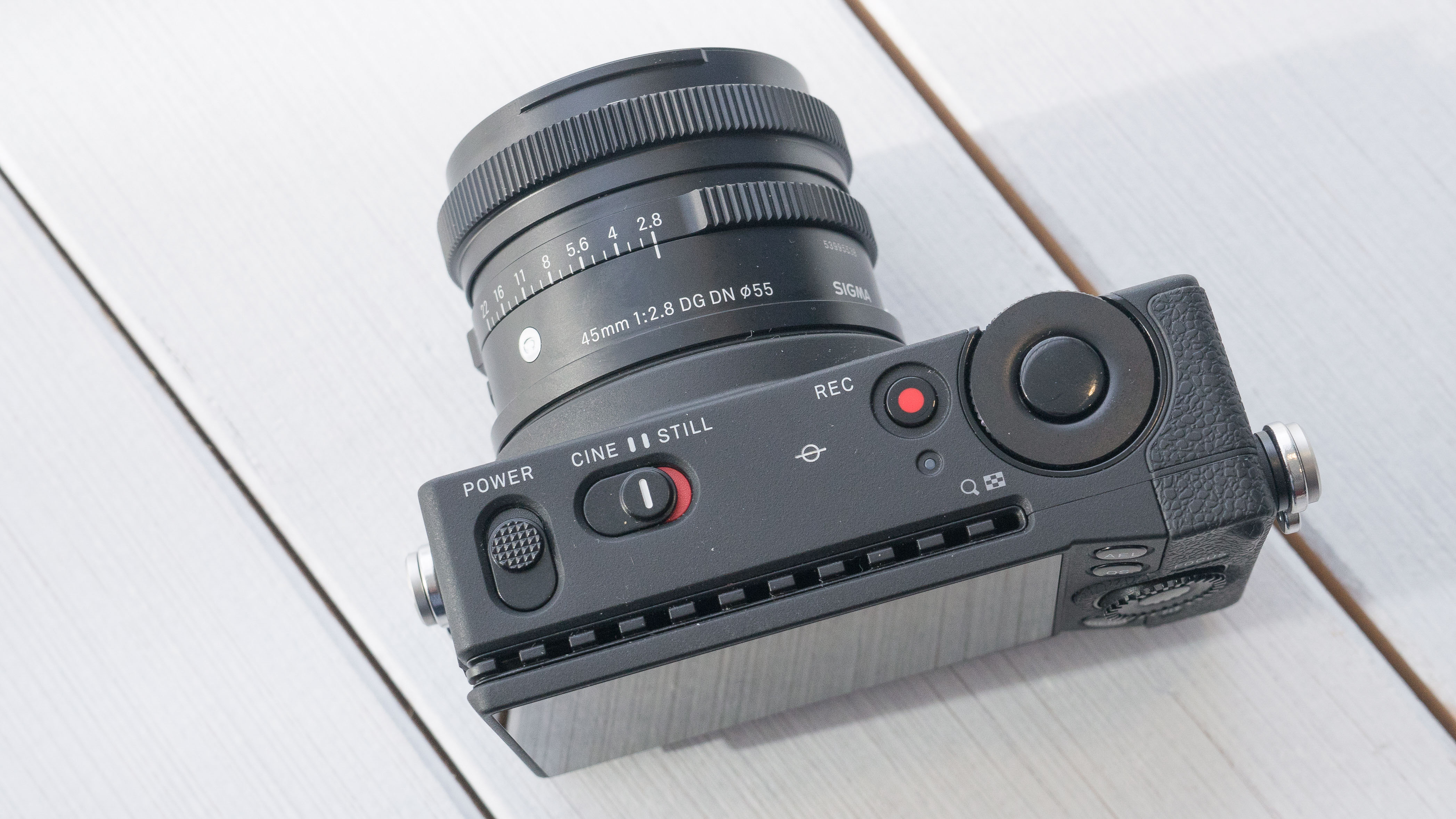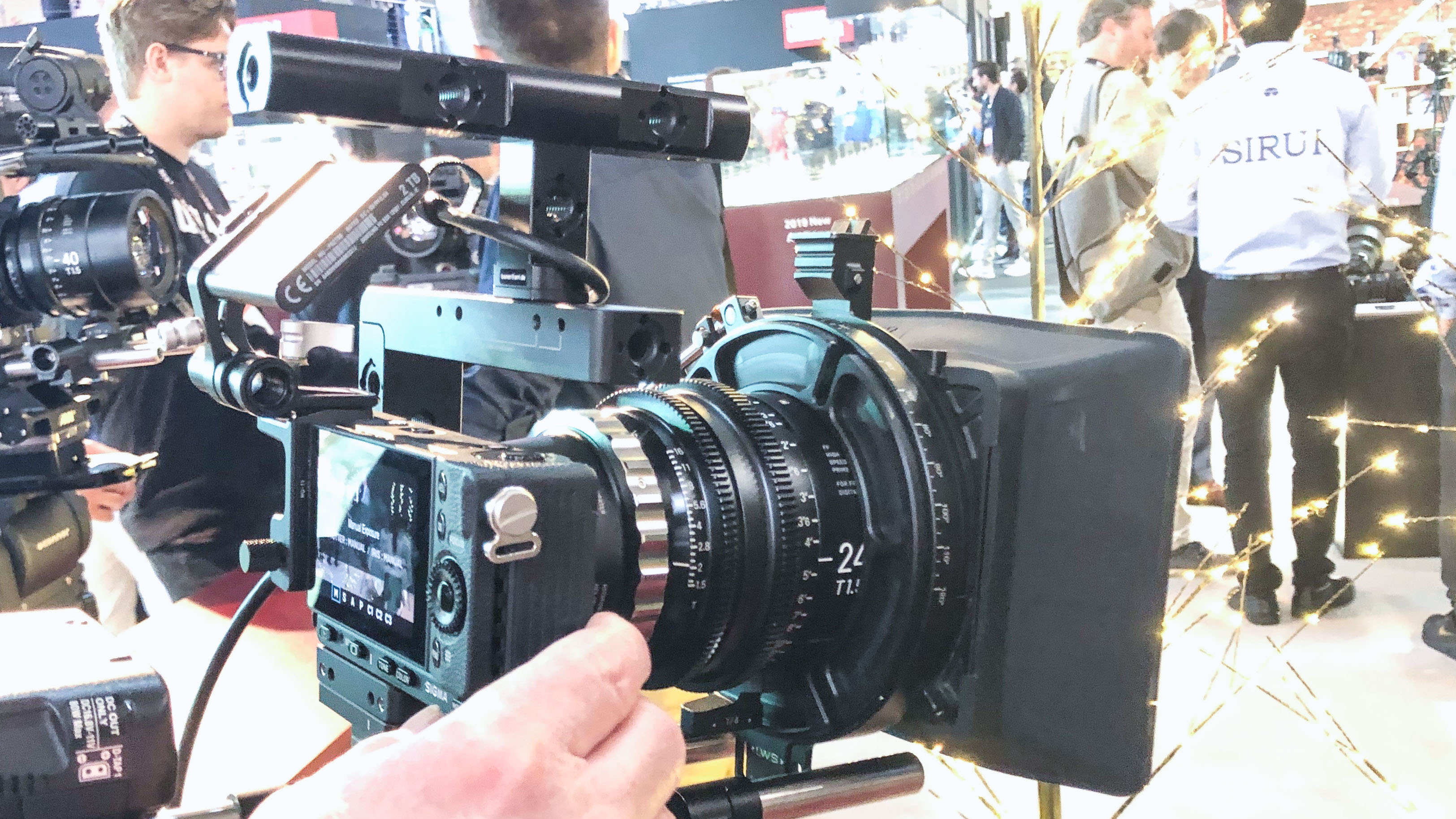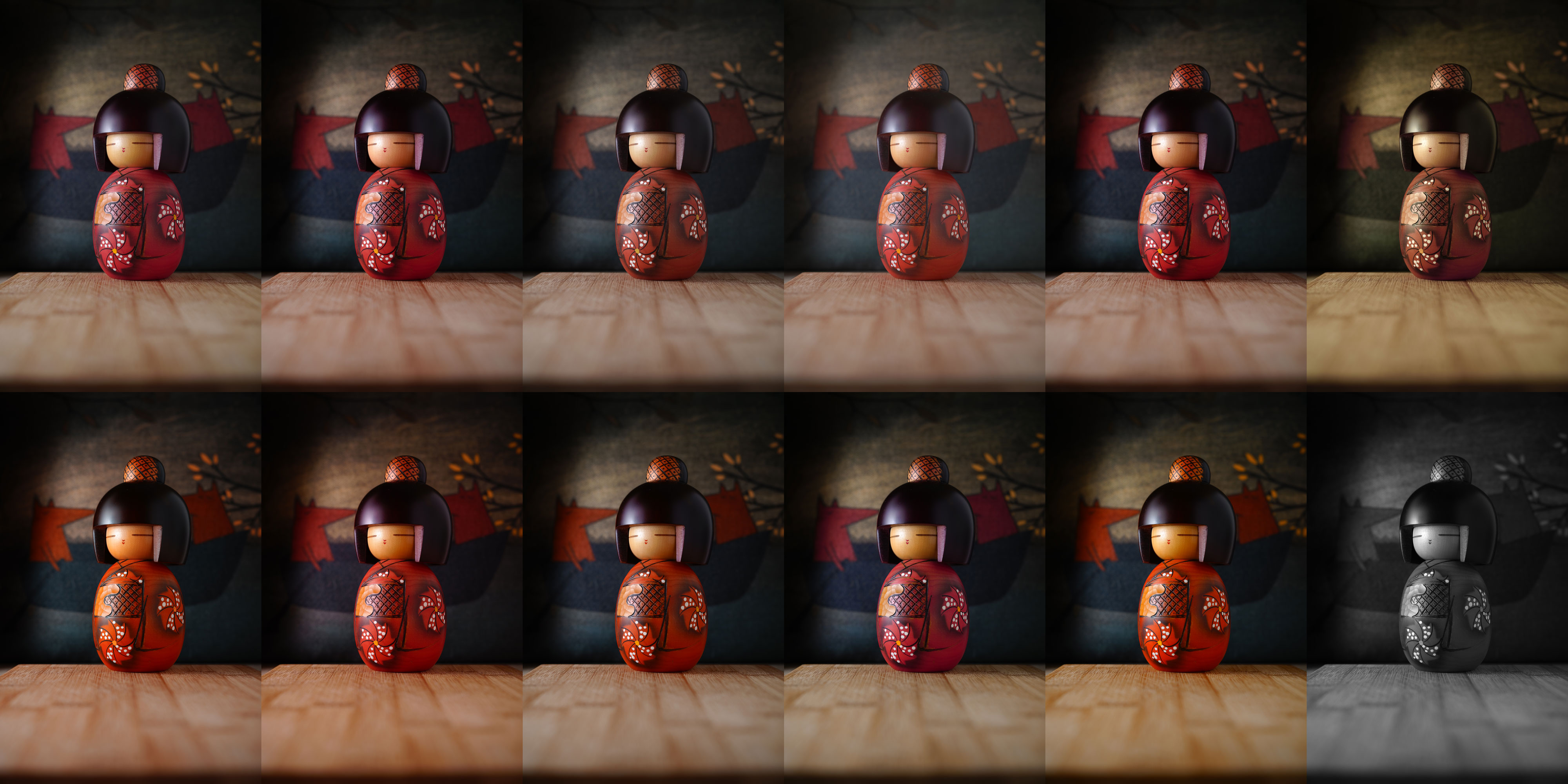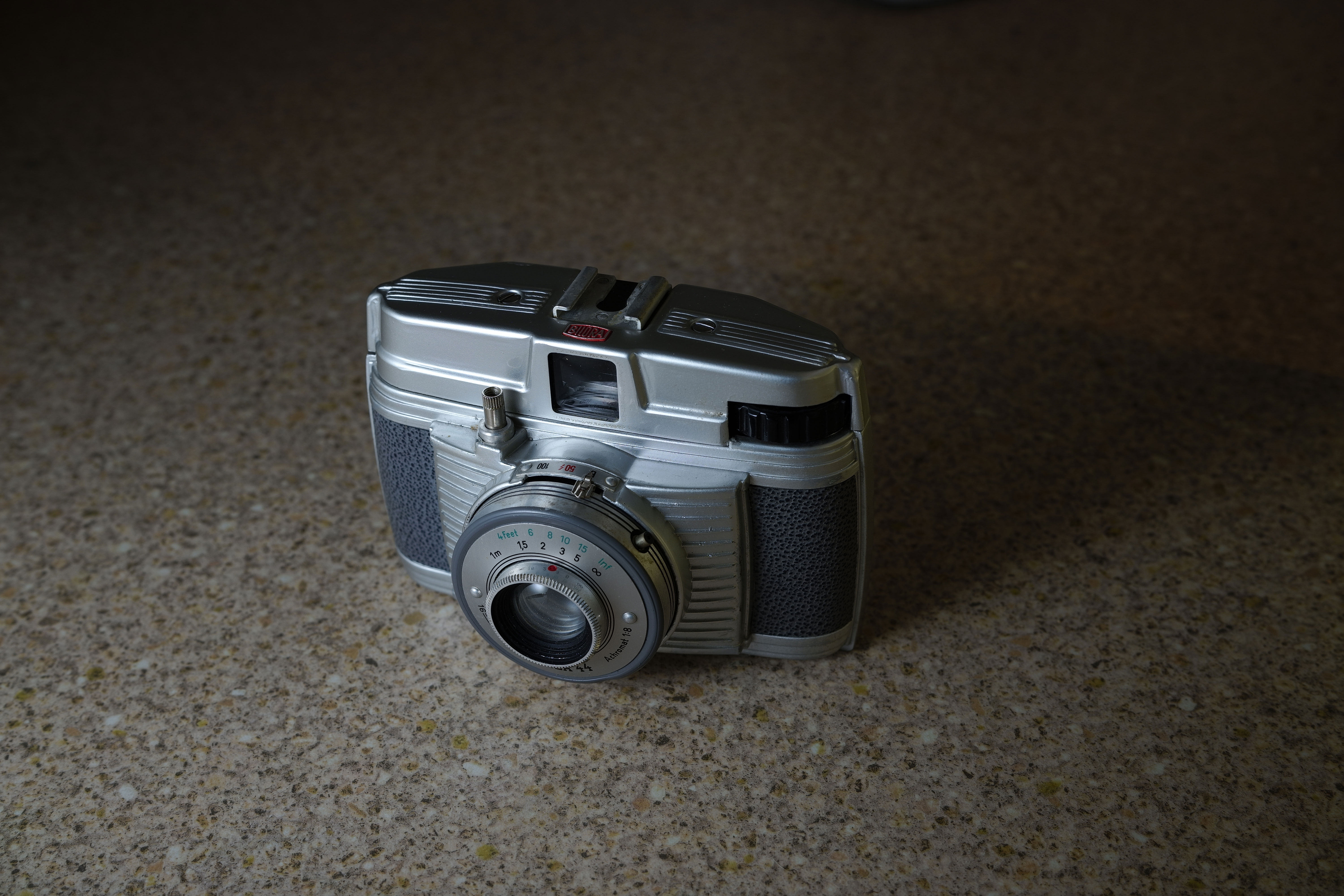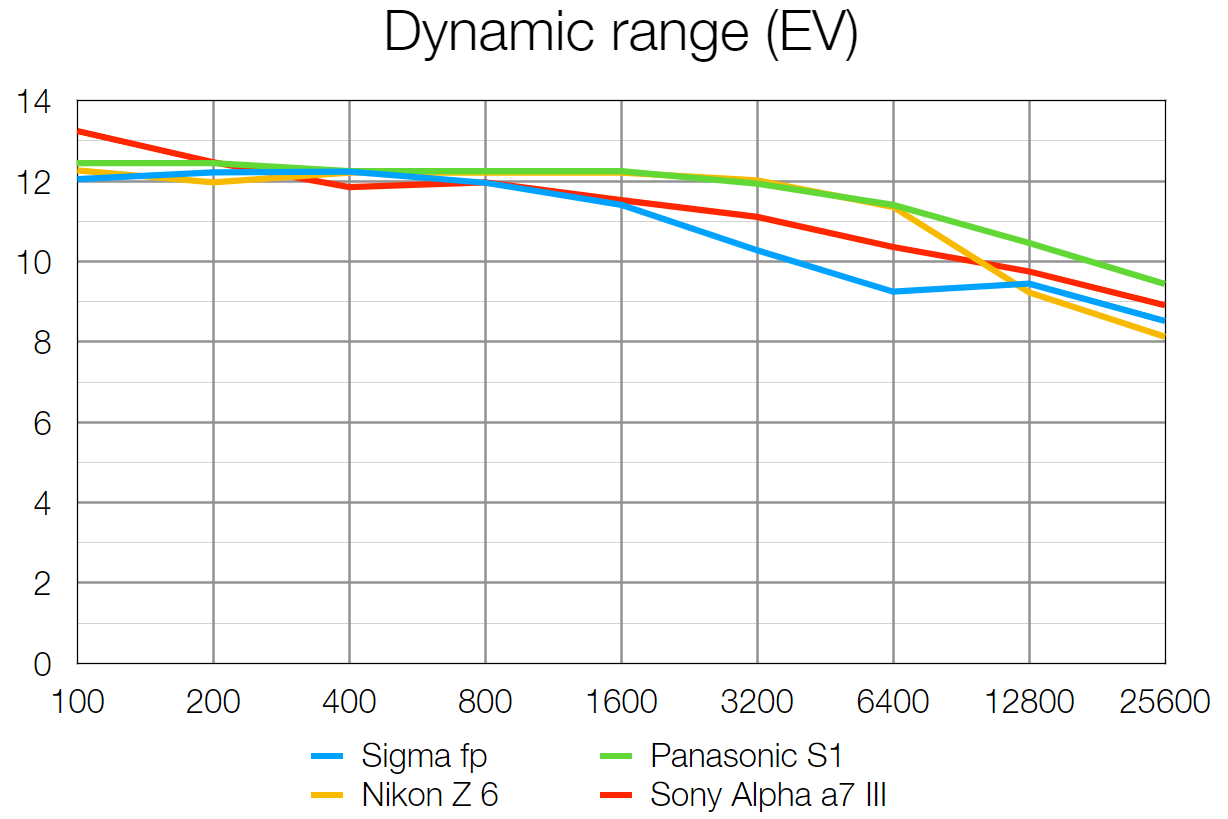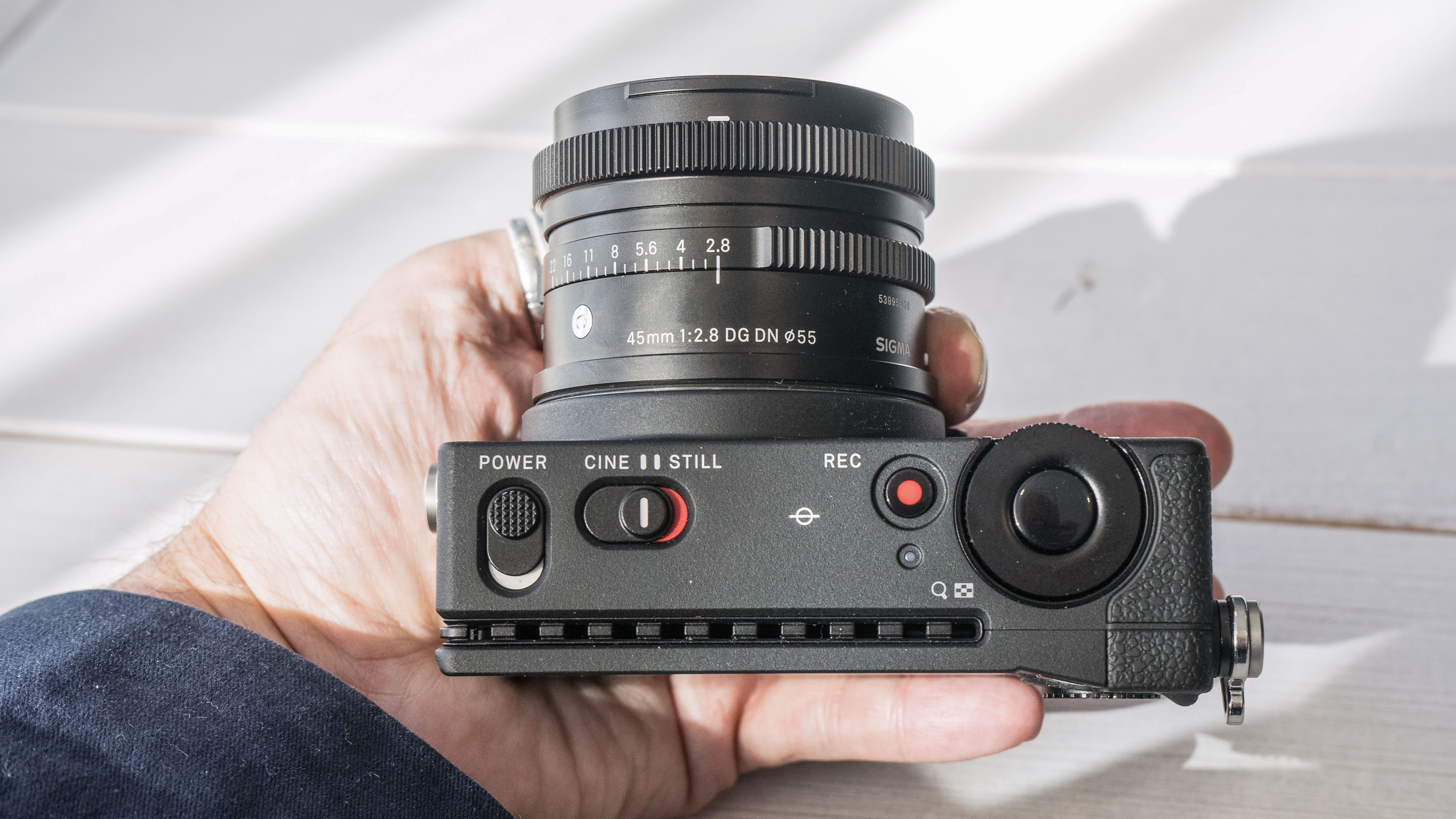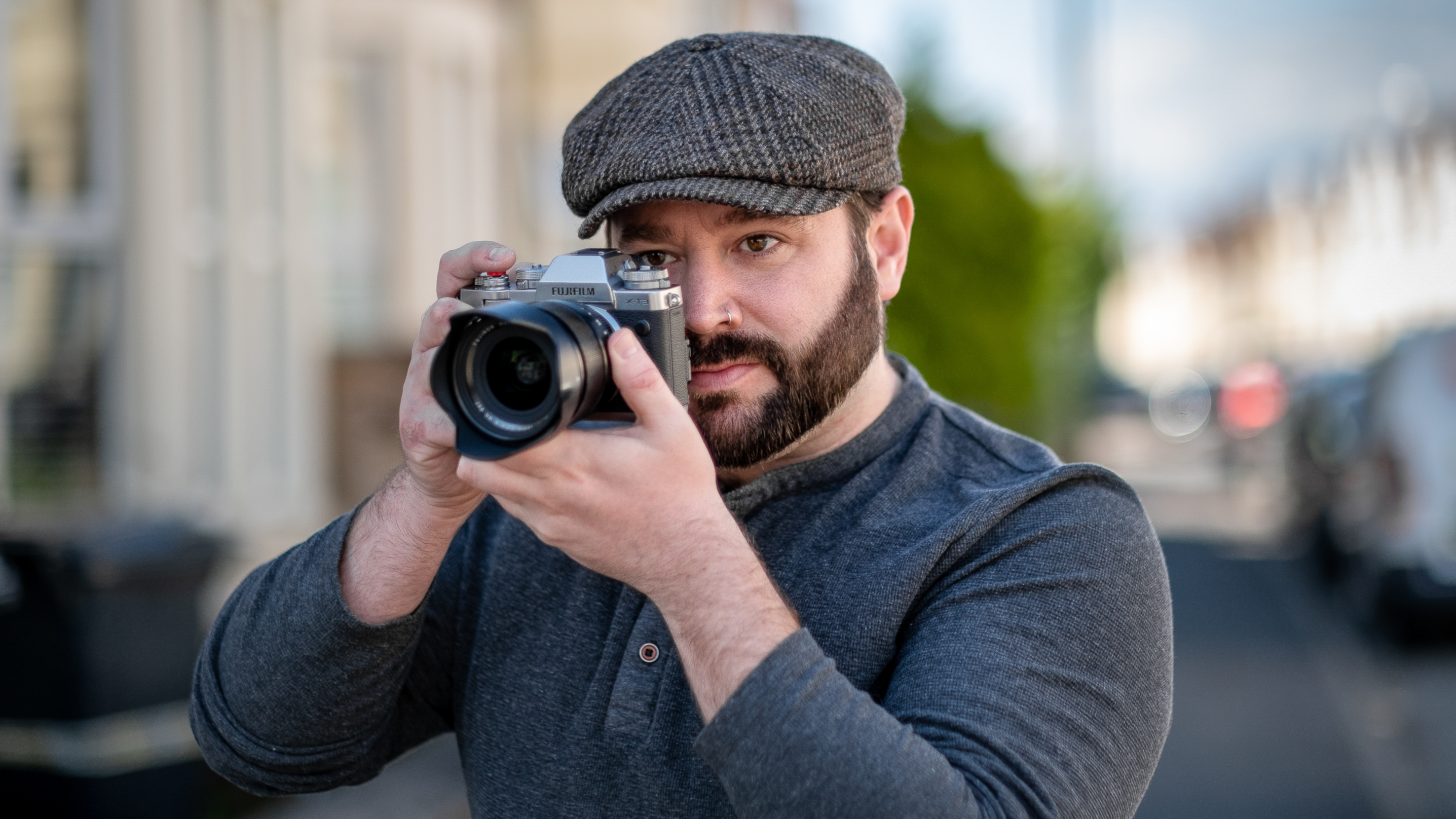Digital Camera World Verdict
It's easy to fall in love with the miniature size of the Sigma fp and its utilitarian, industrial design. Sigma has always dared to be different with its cameras, and given that there are now so many different full-frame mirrorless systems, this is great to see. This is a camera that is designed to be a start of a system, however, which is where opinions might divide. Stills photographers might find the Sigma fp a bit irritating to handle without its optional screw-on grip and ergonomically challenged even then. Videographers will see it differently. Here, the camera is simply a central component in a modular shooting 'rig', and the Sigma's small size and multiple attachment points are big advantages. In the end, it does feel as if the Sigma fp is no more than an interesting alternative in the stills market, but a much more serious and fascinating option for videographers.
Pros
- +
Size and weight
- +
Industrial, functional design
- +
Best at video but good at stills
Cons
- -
Just one SD card slot
- -
Fixed LCD, no EVF
- -
Unreliable continuous AF
Why you can trust Digital Camera World
The Sigma fp is a camera that defies labels. It is so small that you can actually carry it around in a trouser pocket. Admittedly, that's without a lens fitted... but it does give you a fair idea of just how compact this camera is. But despite looking like a chunky compact camera, the Sigma fp is in fact a full-frame interchangeable lens camera that is designed for both serious stills shooting and 4K cine shooting alike.
It can also be used as a webcam for live streaming via a computer. This a feature no-one paid much attention to previously but has suddenly become relevant in the global coronavirus crisis, where home working has become the norm for many This has left other makers scrambling to make their own software solutions, and some cameras simply can't do this without an external capture device, so Sigma was ahead of the curve here.
This is Sigma's first full-frame digital camera, but already this 24.6 megapixel mirrorless camera has its own family of lenses and accessories, thanks to Sigma's partnership with Panasonic and Leica in the L-mount alliance. This means there are a healthy number of lenses already available for the fp, with the a promise of over 40 primes and zooms by the end of 2020 on the L-mount lens roadmap. Sigma has also launched three new dedicated L-mount lenses alongside the fp, including the compact 45mm f/2.8 used for much of our testing.
Thanks to Sigma's MC-21 and MC-31 adaptors, the fp can also be used with many, more Canon EF, Sigma SA, and Arri PL-mount lenses. This adaptability may be more relevant to cinematographers than regular stills photographers, however, and it's worth sounding a note of caution – the Sigma fp is designed to be small, but the majority of L-mount lenses are most definitely not.
• Best L-mount lenses for Panasonic, Leica and Sigma mirrorless cameras
However, Sigma has launched three new APS-C L-mount prime lenses, the Sigma 16mm f/1.4 DC DN, Sigma 30mm f/1.4 DC DN and Sigma 56mm f/1.4 DC DN – all of which will be available in July. We have seen these lenses before in other APS-C mounts, and it's true that mounting an APS-C lens on a full frame camera is not ideal because of the crop factor and drop in resolution. We wait to see what effect this will have on video capture. Despite the limitations, however, these compact and very fast crop-mode lenses do offer an interesting alternative.
You can also use compact classic lenses from Voigtländer for example, via adaptors, and use the Sigma fp as a kind of low-cost Leica, but for mainstream autofocus photography, the majority of the full frame L-mount lenses you can get right now are designed on a much larger scale than this camera body.
The best camera deals, reviews, product advice, and unmissable photography news, direct to your inbox!
In video, where the Sigma fp is at the centre of a much larger shooting rig, this is not an issue, of course. We've updated our review to include a section on video, as the Sigma fp is designed as a crossover camera that captures both still and moving images.
Sigma has also released firmware Ver2.0 for the Sigma fp which addresses a number of issues and comments about the camera in its original form. We've not yet been able to test an updated camera yet, but we have noted these changes in the review below. They consist of features that were always intended but unavailable when the camera was launched, performance improvements (notably to the AF) and bug fixes.
Specifications
Sensor: 24.6 MP full-frame (35.9mm×23.9mm) back-illuminated CMOS
Color filter System: RGB Primary color filter
Lens mount: L-Mount
Storage media: SD/SDHC/SDXC memory card(UHS-Ⅱ supported) / Portable SSD (USB 3.0 connection, USB bus power supported
Still image file formats: Lossless compressed RAW (DNG) (12 or 14 bit), JPEG, RAW+JPEG
Image aspect ratios: 21:9, 16:9, 3:2, 2:1, 4:3, 7:6, 1:1
Color space: sRGB / Adobe RGB
Movie Recording Format (internal): CinemaDNG (8bit / 10bit / 12bit) / MOV:H.264 (ALL-I / GOP)
Audio format: Linear PCM (2ch 48kHz /16bit)
Recording pixels / Frame rate: 3,840×2,160 (UHD 4K) /23.98p, 25p,29.97p, FHD(1,920x1,080) /23.98p, 25p, 29.97p, 59.94p, 100p, 119.88p
HDMI External Output Movie Format: HDMI Loop out External recorder: ATOMOS Ninja Inferno, Blackmagic Video Assist 4K supported
Audio format: Linear PCM(2ch 48kHz /16bit)
Recording Pixels / Frame Rate: 3,840×2,160 (UHD 4K) / 4:2:2 8bit 29.97p / 25p / 23.98p FHD (1,920x1,080) / 4:2:2 8bit 119.88p / 100p / 59.94p / 50p / 29.97p / 25p / 23.98p
Focus: Contrast detection system, Single AF, Continuous AF (with moving object prediction function), Manual Focus
AF modes: Auto, 49-points selection mode, Free Movement mode, Face / Eye Detection AF mode, Tracking AF mode
Metering System: Evaluative, Spot, Center Weighted Average Control
Still Image Shooting modes: (P) Program AE (Program Shift is possible), (S) Shutter Speed Priority AE, (A) Aperture Priority AE, (M) Manual
Movie shooting modes: (P) Program AE, (S) Shutter Speed Priority AE, (A) Aperture Priority AE, (M) Manual
ISO range: 100-25600 (expandable options:. ISO6,12, 25, 50, 51200, and 102400)
Image stabilization: Electronic system
Shutter type: Electronic shutter, 30 to 1/8,000 sec, Bulb
Drive modes: Single shooting, Continuous shooting, Self-timer, Interval shooting
Continuous shooting speed: Hi: 18 fps (up to 12 shots), Med:5 fps (12 shots), Low: 3 fps (24 shots)
Monitor: TFT color LCD monitor Aspect Ratio 3:2, 3.15", Approx. 2,100,000 dots
Color mode: 12 types (Standard, Vivid, Neutral, Portrait, Landscape, Cinema, Teal & Orange, Sunset Red, Forest Green, FOV Classic Blue, FOV Classic Yellow, Monochrome)
Interface: USB3.1 GEN1 Type C, HDMI Type D (Ver.1.4), Release Terminal – also used as an external microphone terminal, Headphone output
Li-ion battery: BP-51 *USB power supply available (when the power is turned off)
Dimensions: 112.6×69.9×45.3mm,
Weight: 422g (including battery and SD card), 370g (body only)
Key features
Part of the explanation for the small size of the Sigma fp is that it does not have a mechanical shutter at all, only an electronic shutter. The electronic shutter does present its drawbacks for stills photography, though. There's an increased likelihood of 'rolling shutter' effects with fast panning or fast-moving subjects, and the maximum flash synchronization speed is a very slow 1/30sec.

The back of the camera is where you get the detail of the Sigma fp, with controls both to the right and below the LCD. The display is touch sensitive, but while you can use to select focus points, you can't use it for making menu selections, hence the wide choice of buttons. A QS quick selection control takes you to your main options in any situation, and these are navigated to using the rear jogwheel control, But there is (naturally) a Menu button to take you to the extensive set-up options for this camera.
A good example of the range of options can be seen when looking at those of those for the optional Director's Viewfinder... Here you can specify the screen proportions you want this to give, replicating those of industry-standard cine cameras from Arri, Sony and Red.
The Sigma fp does not offer Log or LUT options for video, but this is offset by its CinemaDNG capture, which offers a lot of headroom for grading later. Alternatively, the Tone button at the back does allow you to tweak contrast so that you can set a flat video output which can give you a wide dynamic range that you can then tweak to your liking in the grading process in post production. There are a frightening selection of Color options too, including the 'Teal and Orange' look that's currently in vogue in Hollywood movies.
The firmware Ver2 update brings the following features:
- Cinemagraph creation and playback
- CinemaDNG footage playback
- Still capture during live view and movie shooting in Cine mode
- Still image capture from movie files (CinemaDNG, MOV) shot with the SIGMA fp
- HDR in movie shooting
- Still and movie shooting in Director's Viewfinder mode
- DCI 4K 12bit / HDMI Raw output
- RAW over HDMI recording with Atomos Ninja V monitor-recorder (a free AtomOS firmware update for Ninja V is required)
- Supports recording Blackmagic RAW codec over HDMI with Blackmagic Video Assist 12G models (Requires firmware update of Video Assist 12G models using Video Assist Update 3.3)
- Camera movement control with ZHIYUN Weebill S gimbal (Firmware update required)
- Camera control in USB mode (The SDK (Software Development Kit) for controlling the camera is scheduled to be available by early July.
Build and handling
Sigma has also announced, already, that there will be a range of add-ons with the fp.... and when you pick up the camera, and realise just how small it is, you see why. This is little more than a box, which has been stripped right down to make it the size that it is. There is no electronic eyelevel viewfinder as standard – and the LCD does not tilt or rotate. There is no grip built-in for comfortable stills shooting (though you can buy one separately). And there is no built-in flash, or even a hotshoe, and if you want a strobe you need to buy the right add-on.
9 Sigma fp accessories have therefore been announced so far, including an eyepiece viewfinder, a choice of grips and a hotshoe unit. And you are almost certain to need to buy one or more of these to adapt this camera for your own use.
But although this camera is pared back, it is not pared to the bone. Far from it. The camera has been designed with lots of functional keys and controls, to help you get the set-up that you want quickly. Sigma has resisted the temptation to hide key things in sub-menus or buttons that are too small for human hands.
In fact, this all-aluminium body has a solid, almost industrial feel to it, which gives the impression that is here to do business, and to do it well.
The top plate spells out this approach perfectly. There is a big on/off switch, a shutter button with a sensibly proportioned control dial, and a separate video record button at its side. In the middle there is a simple two-position control that allows you to choose between Cine or Still.
Choosing video or photography at this point then completely changes the UI of the camera – and the options that you get on screen at the back of the camera. We have seen this less-than-traditional approach to camera design most recently on the Fujifilm GFX100 medium-format camera, the Leica SL2 and Panasonic Lumix S1H – and it makes a lot of sense here too.
At the side of the camera there are three different covers. One for USB, and one for microphone input or for use with an remote control. The middle cover is removable (so must not be lost if you want to ensure maximum weatherproofing) and hides the connector for the hotshoe accessory and an HDMI port.
The shoulder strap lugs at either side of the camera also have a solid industrial feel... but there are good reasons for each. Each strap holder is held in with a 1/4in screw - so when remove give you two further standard-size tripod bushes for mounting your camera for upright shots, or for attaching other accessories.
At the base, the battery and the card slot are found behind the same door. The battery is the 7.6V 1200mAh NP51 type,- which is completely interchangeable with the widely used Panasonic DMW-BLC12 pack; so spares will be easy to find at a variety of prices.
There is just one card slot here, and it is a regular SD type, and not one of the faster types (like XQD and CFexpress). Sigma tells us that you need to make sure that you use V60 class (or faster) UHS-II SDXC cards if you want to take advantage of Cinema DNG recording in the camera itself, but you still won't reach the Sigma fp's full potential (12-bit Cinema DNG recording) without a plug-in external recorder or SSD.
Shooting high-resolution video, as many will know, causes lots of problems with excessive heat, and this creates headache for camera designers. The Sigma solution here is a giant heat sink – a series of grill-like holes that surround all four side of the camera just behind the 2.1 million dot, 3.1in LCD. It is another piece of functional design, that you might usually see only on high-end cinema cameras. This is a passive cooling system with no fan, so there are no worries about audio interference while filming.
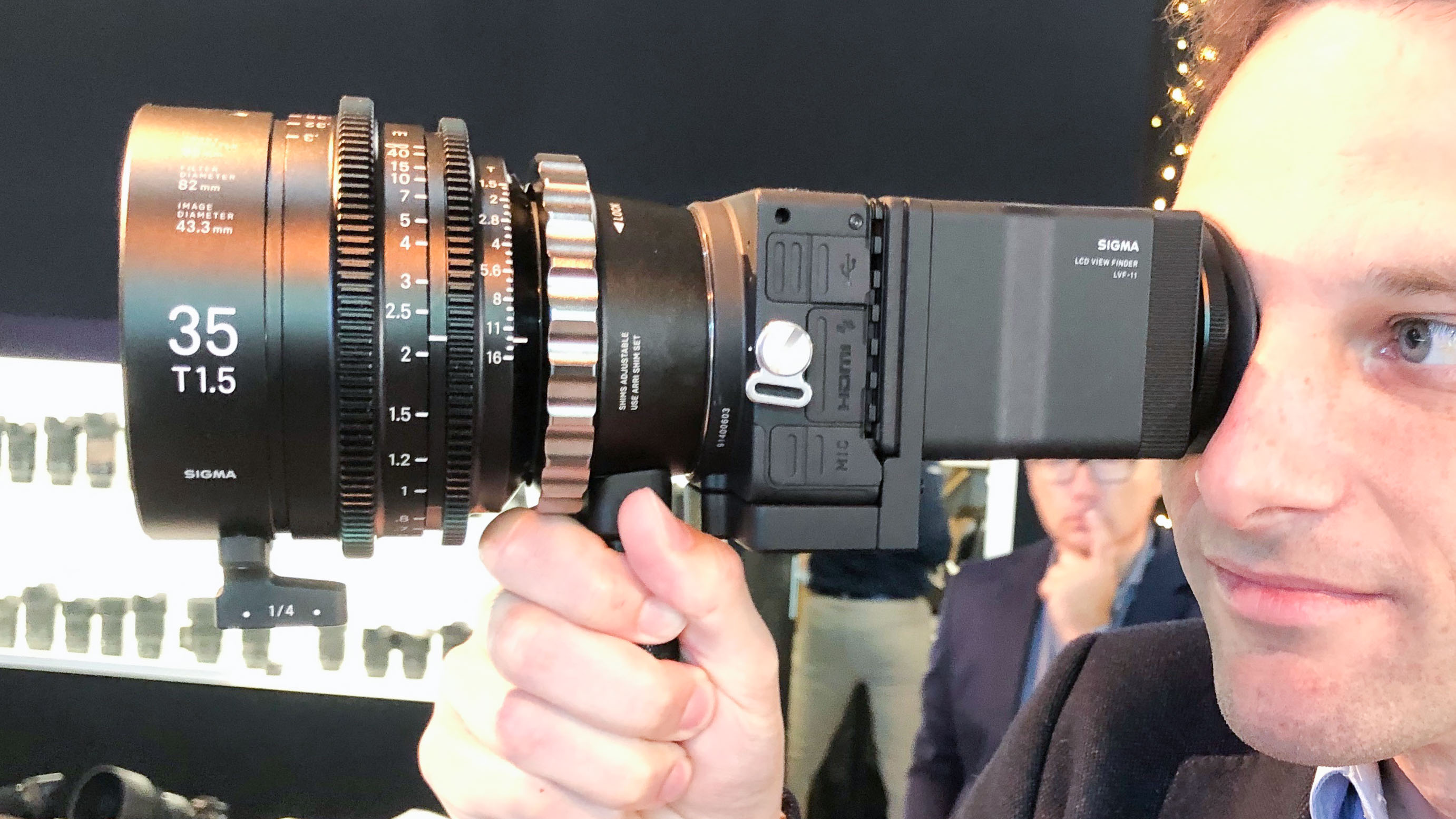
Performance
The Sigma fp uses a contrast AF system rather than the theoretically faster phase-detect/hybrid systems used by Sony and Nikon (Panasonic has stayed with contrast AF). In the past, this might have been a worry. Contrast AF has a reputation for sluggishness, particularly with larger sensor sizes. In fact, the Sigma fp's autofocus is surprisingly snappy. We've only been able to test it with the Sigma 45mm f/2.8 'kit' lens so far and other lenses may react differently, but with this lens the fp's static AF speed feels as fast as any of its rivals.
That's a pleasant surprise and could be due to a couple of factors. Camera processors have become faster and more powerful, and AF algorithms too. We're also seeing faster and more powerful AF actuators in modern lenses – focus speed ultimately depends on the lens as much as the AF system.
The face/eye detection appears to work well too, tracking moving faces quite easily. The focus tracking mode doesn't work so well, especially in continuous AF mode – it can lock on to a subject relatively well and follow it around the frame as long as the movement isn't too erratic, but even if the focus markers are over the subject, the AF can hunt quite badly and throw some shots in a burst completely out of focus. The static AF performance is fine, but the continuous AF mode is pretty patchy.
This is borne out by our video tests (below) which reveal a very likeable filmmaking camera but very unpredictable continuous AF.
The fact is, despite its 18fps burst mode, the Sigma fp is not really camera for sports and action. Quite apart from its continuous AF performance, Sigma quotes a buffer depth of just 12 shots – that's less than a second's worth of shooting at full speed.
It does have electronic image stabilization, but it's no substitute for the real thing. It captures and merges three shots (for stills) or two frames (video) to produce a sharper image, which adds to the processing overhead and, when shooting stills, it works for JPEG capture only.
There are other aspects of the Sigma fp which feel very much like a work in progress. You can shoot merged HDR images in-camera but only with JPEGs, and HDR will come to the Cine mode in a future firmware update. Sigma is also promising an in-camera Cinegraph feature but, again, only via a future update.
The camera does have Sigma's shadow-boosting Fill Light feature built in, and now you can turn it up to +5 (versus the old +2 maximum). This did not work correctly on our sample, however, producing a flat and visibly processed HDR look at low settings and and a wild solarization affect at higher values. It does look like there's something wrong here that needs fixing.
The still image quality is very good. Both our lab tests and our real-world shooting confirm that the Sigma fp matches its 24-megapixel full frame mirrorless rivals for resolution, noise and dynamic range (though this does take a dip past ISO 1600). It might feel as if it's been designed as a 'video first' camera, but it works well for stills photography and there's no compromise in image quality.
We will update this review with a longer verdict on the video capabilities of this camera with some real-world testing, but a couple of points are worth mentioning. Like other 4K cameras, this one needs an external recorder to reach its full performance. If you're recording in the CinemaDNG format internally, you're restricted to 8-bit capture (10-bit and 12-bit need an external recorder) and a maximum frame rate of 25/24p. If you want to shoot 4K UHD at 30p internally, you'll have to switch to the MOV format.
This is a camera that really needs an external recorder to reach its proper video potential (it doesn't have its own audio monitoring socket, either), and ideally a good stabilizing rig too for mounting mics and lights. The good news is that the Ver2.0 firmware update brings RAW video capture support for Atomos Ninja V and Blackmagic Video Assist 12G external recorders (both will need firmware updates).

Video
We passed the Sigma fp over to Digital Camera Magazine's video expert Alistair Campbell for an assessment of its video capabilities, and he liked the Sigma fp a lot but did highlight its weaknesses for continuous AF. You can see that very clearly in the sample video below, where the Sigma fp echoed the results we got in stills photography – it can find focus, but it can lose it very quickly too and spend some time getting it back again.
Sigma says it has addressed the AF performance with its Ver2.0 update but we have not yet had a chance to test the Sigma fp with this update installed. The system will still use contrast AF as that is a basic hardware feature, but Sigma may have been able to tune the AF algorithms to counter some of the focusing issues we had in our tests.
On the plus side, the Sigma fp's small size is really refreshing, but it does mean there's nothing really on the body to get a grip on, so you'll probably end up using it on a rig anyway. One advantage of the small size, though, is that it is easy to balance on a gimbal.
The size means that the Sigma fp feels like an ideal run and gun camera, but the continuous AF performance works against it here – but if you're used to shooting with manual focus and skilled at adjusting it on the fly, that might be a better way to shoot with this camera.
Interestingly, the screen is no larger than any rival 4K video camera's, but it actually feels big, mainly because it takes up most of the back of the camera. The Sigma fp also feels pretty responsive when you press the buttons.
The fp does have (electronic) image stabilization, but we turned that off and used the camera on a gimbal, which is probably what most users would do, and the footage was stable enough without any extra help.
This does feel like a really rugged camera, and you could probably bash it around a bit and it would be fine (as mostly happens on video shoots). That's obviously NOT recommended, but it does inspire some confidence.
The slow AF might bother a lot of videographers, but for many others, continuous AF is not an essential. It's nice to be forced to do some work yourself – especially with this little camera. For us, what the Sigma fp lacks in AF finesse, it makes up for in likeability and character – but of course, it depends on how much you value fast, smooth AF over focusing by hand.
The Ver2.0 firmware update brings feature enhancements that could be especially interesting to videographers:
- Dual Base ISO (ISO100 and ISO3200)
- Improved AF performance (as mentioned above)
- CinemaDNG 25 and 29.97 fps (UHD 12bit) shooting
- CinemaDNG 100 fps (FHD 12bit) shooting
- CinemaDNG 100 and 119.88 fps (FHD 8bit and 10bit) shooting
- Time code generation
- Compatible with BWF format
Lab data
We chose three 24-megapixel full frame mirrorless cameras to measure the Sigma fp's performance against: the Panasonic Lumix S1, Nikon Z 6 and Sony A7 Mark III.
It's small wonder that with all four cameras packing ~24MP sensors, all resolve identical amounts of fine detail up to ISO 3200, and differences remain minor further up the sensitivity scale.
Our signal to noise test measures image clarity, specifically the ratio of the actual image 'data' you want to capture, versus the image noise that you don't want, but will inevitably be visible when shooting at higher ISO sensitivities. The higher the score at a given ISO sensitivity, the better.
Though the Sigma fp scores well in this test, it's narrowly beaten by the Panasonic S1 and Sony a7 III through most of the sensitivity range, and struggles to match the Nikon Z 6's image clarity at middling ISO settings.
The Sigma fp delivers respectable dynamic range at low sensitivities and closely matches its key rivals. However, at ISO 1600 and beyond it trails the pack, by as much as a 2EV margin at ISO 6400 when compared to the Nikon Z 7 and Panasonic S1.
Verdict
It's hard not to fall in love with the miniature size of the Sigma fp and it's utilitarian, industrial design. Sigma has always dared to be different with its cameras, and it has once again done this with its first full-frame mirrorless model.
Given that there are now so many different full-frame mirrorless systems, this has to be a good thing. This is a camera that is designed to be a start of a system where you need to buy add-ons that suit your shooting style; and that alone will appeal to lots of people who like this modular approach. And thanks to the L-mount alliance, there will be plenty of lenses available for this camera too.
We suspect that ultimately this is a camera that will work better for filmmakers than photographers, but it's worth stressing that this little camera can match the still image quality of any of its rivals.
The Sigma fp is very small for a full frame mirrorless camera but the size of its lenses may prevent it ever being truly pocketable. You do need lenses to take pictures, and the size of the camera body alone is only part of the story.
The Ver2.0 firmware update has added many new features and capabilities to the Sigma fp, which we look forward to trying out properly on an updated camera and which definitely extend its video credentials. The update may also help with our one issue with this camera, the wayward continuous AF.
We like the Sigma fp a lot and look forward to seeing how it's used by stills photographers and film makers – and it does ask some awkward questions of its rivals. Why are they so big, do they really need hybrid phase-detect AF, and why can't they shoot raw video too?
Read more:
• Sigma fp accessories
• The L-mount lens roadmap
• The best mirrorless cameras you can get right now
Alistair is the Features Editor of Digital Camera magazine, and has worked as a professional photographer and video producer.

